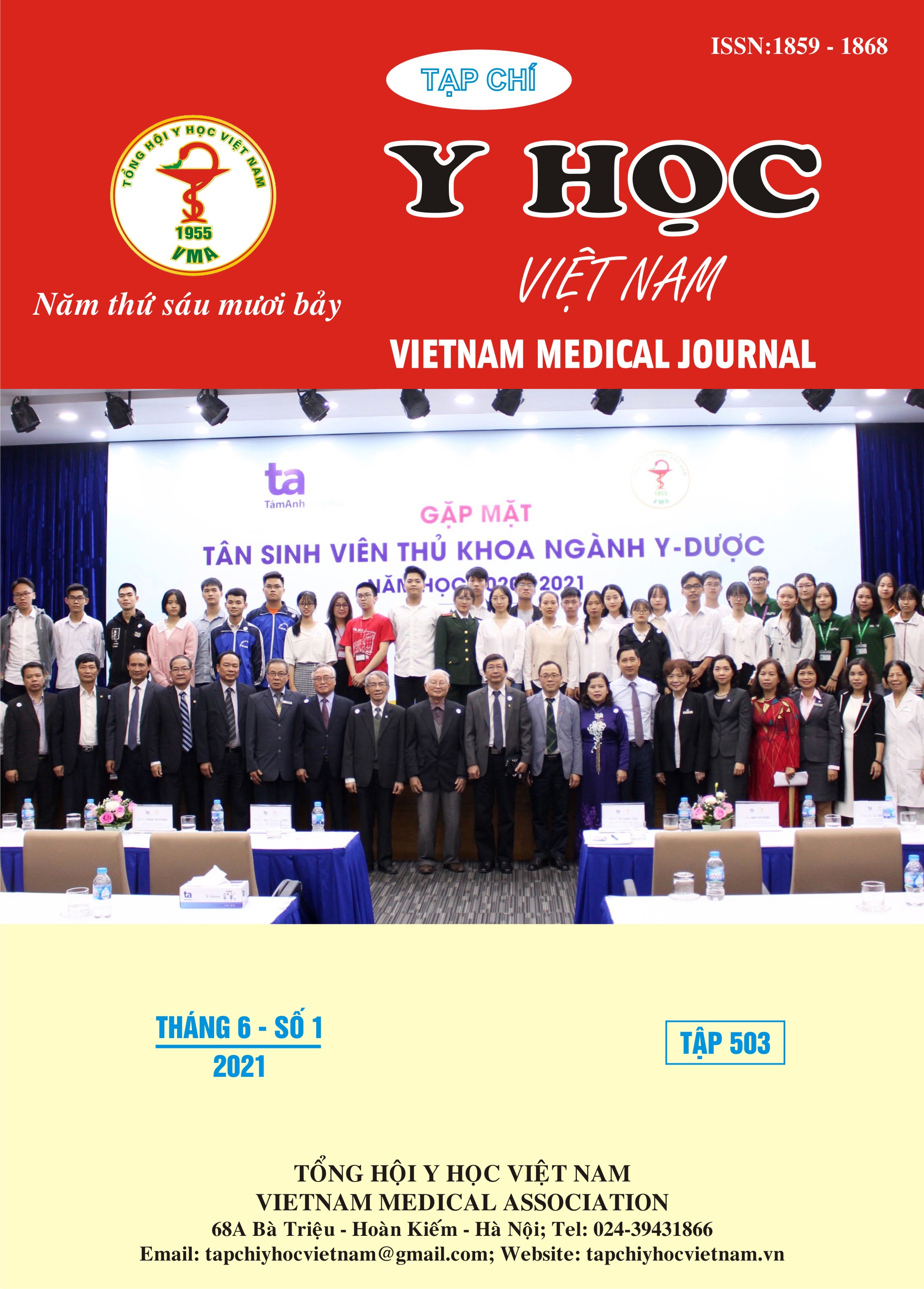CHARACTERISTICS OF PSYCHIATRY AND MOVEMENT DEVELOPMENT IN CHILDREN WITH AUTISM FROM 24-72 MONTHS IN THAI NGUYEN
Main Article Content
Abstract
Objectives: Describe the characteristics of psychiatry and movement development in children from 24 to 72 months of age with an autism spectrum disorder. Subjects and methods: A descriptive study was conducted on 161 children from 24 to 72 months of age with an autism spectrum disorder in Thai Nguyen, from 2014 to 2017. Autism was diagnosed according to DSM-IV and graded according to the autism assessment scale (CARS), psychomotor development characteristics were assessed by the Denver II test. Results: Average age at diagnosis of autism 29.87 ± 4.2 months, autism was more common in boys than girls, male/female ratio = 4.75/1; Severe autism accounted for a relatively high rate (70.2%). Children with autism have the most delay in communication in areas related to communication such as language delay (95.03%); retarded personal-social development (95.65%). About 73.91% of children with autism have delays in fine and adaptive motor development and 25.47% of children with autism have gross motor delays. Children with autism have moderate and severe developmental delay (DQ < 50) accounting for 59.0%. Conclusion: Children with autism have the most developmental delays in communication-related areas such as language delays, personal-social delays (95.65%). Children with autism have moderate and severe developmental delay (DQ < 50) accounting for 59.0%
Article Details
Keywords
Autism, Denver II test, language, individual-society, psychiatry and movement development
References
2. Đoàn Thị Ngọc Hoa, Nguyễn Thị Thanh Mai (2017), “Khảo sát đặc điểm giấc ngủ của trẻ tự kỷ”, Tạp chí Y học Việt Nam, Tập 459, tháng 10, số 2, tr. 192-195.
3. Phạm Trung Kiên, Lê Thị Kim Dung và cộng sự (2014), “Nghiên cứu tỉ lệ hiện mắc và kết quả điều trị tự kỷ trẻ em tại Thái Nguyên”, Y học Thành phố Hồ Chí Minh, 18(4) tr. 74-79.
4. Lê Thị Vui (2020), Dịch tễ học rối loạn phổ tự kỷ ở trẻ 18-30 tháng và rào cản tiếp cận dịch vụ chẩn đoán, can thiệp rồi loạn phổ tự kỷ tại Việt Nam, 2017-2019, Luận án tiến sỹ. Đại học Y Hà Nội.
5. Gulati Sheffali, Kaushik Jaya Shankar, Saini Lokesh, et al (2019), “Development and validation of DSM-5 based diagnostic tool for children with Autism Spectrum Disorder”, PloS one, 14 (3), 14 (3), pp. 1-11
6. Hoang Van Minh, Le Thi Vui, Chu Thi Thuy Quynh, et al (2019), “Prevalence of autism spectrum disorders and their relation to selected socio-demographic factors among children aged 18-30 months in northern Vietnam, 2017”, International journal of mental health systems, 13, pp. 29-29.
7. Lai M.C, Lerch J.P, Floris D.L, al et (2017), “Imaging sex/gender and autism in the brain: Etiological implications”, J Neurosci Res, 95 (1-2), pp. 380-397.
8. Sularyo Titi, Endyarni Bernie, Lestari Tri, et al (2012), “Role of Denver II and Development Quotients in the management of several pediatric developmental and behavioral disorders”, Paediatrica Indonesiana, 52 (1), pp. 51-56.


